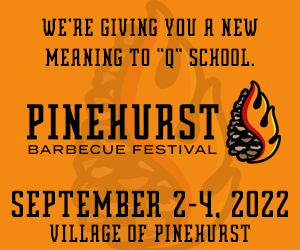From the front, the team-issued golf shirts looked typically routine – button, collars, logo on the chest. But emblazoned on the back were numbers, which brought a few mixed reactions from players.
The symbolism, though, was not lost on Colby Jackson.
This summer, Jackson, 13, was a member of River Ridge Golf Club’s PGA Junior League team and was later selected to the Raleigh All-Star team that competed in the PGA Junior League’s Southeast Regional at the World Golf Hall of Fame in Florida. So Jackson received two such shirts – or jerseys.
“It added to the team aspect, that you were part of a team,” said Jackson of the numbered shirts. “It’s just like baseball, football or basketball. That number is who you were as part of that team. It was pretty cool.”
Team golf in the United States is unique. At the prep and collegiate level, the team aspect is usually a by-product of combined individual scores. Professionally, the concept is generally reserved for international match-play events such as the Ryder, President’s or Solheim Cups.
In 2011, Junior League Golf, for boys and girls age 13 and younger, launched as a pilot program in Atlanta, Dallas, San Diego and Tampa. With the PGA of America’s backing in 2012, more than 120 teams in 20 cities competed. This year, 45 teams were formed in the PGA of America’s Carolinas Section alone, including 16 in the Raleigh geographical area.
“We’ve done some junior leagues for about seven years,” said Tim Cockrell, River Ridge’s head golf professional, “but when I saw a flyer that the PGA sent out, I was curious.”
Cockrell contacted Johnny Scott, his contemporary at Pine Hollow Golf Club, which formed a team in 2011.
“We got to talking and thought we could expand on the success he had,” Cockrell said. “Again, while we had a junior program, we had never traveled and played another team in a competition. That’s what intrigued me and it intrigued the kids who wanted to do it. This was something new and exciting.”
The Nuts And Bolts
The league is open to any club that wants to field a team of at least 10 junior golfers. Cockrell said that while most of his 11 players this year were River Ridge regulars, a player does not have to be a club member.
In a match against an opposing team, each coach submits a lineup of four two-player teams that faces the opposition’s corresponding lineup. The two-player teams play nine-hole matches in a scramble format – players hit from their team’s best shots from tee through green – with match play scoring.
“I like the scramble format because it gives you some relief if you don’t hit a good shot,” said Jackson, adding that “there is also pressure if you have to pick your teammate up because they hit a bad shot. So it’s exciting. It’s not something we play every day.”
The nine holes are broken into segments of three holes (Nos. 1-3, 4-6, 7-9) and each segment is worth either a half or full point, depending on whether it was halved or won. Each of the four two-player teams can win a maximum of three points – or flags, as they are called – in their respective matches for a 12-point overall team total.
In addition to setting the starting lineup, the coach is required to substitute golfers during the second or third segments. Each player must play in the match.
“Say your youngest player is 8-years-old, and he’s just starting out,” Cockrell said. “You might not necessarily want to put him out there for all nine holes because it might be too much. So you pair him with someone who might have more experience. Then after three holes, you can sub another player into the lineup.”
An Impressive Start
River Ridge’s debut in the PGA Junior League could not have been scripted any better. During the regular season, the team went undefeated in home-and-away matches against teams in its pod – Wil-Mar Golf Club and two Pine Hollow entries.
From River Ridge’s pod, a 10-player Southeast Raleigh all-star team was selected to play in a four-team city championship. Members of the team were Jackson, Janie Gooch, Biggs Hawley, Brady Hooks Peter Jackson of River Ridge; Matt Hayes, Jacob Kallam, Junye Ou and Coltin Scott of Pine Hollow; and Rachel Johnson of Wil-Mar. Cockrell served as head coach and Scott was the assistant.
After Southeast Raleigh defeated a Greenville all-star team for the city title, it traveled to Greensboro and defeated a similar Charlotte squad for the state title and a trip to the six-team Southeast Regional in Florida.
Southeast Raleigh went 0-3 at the regional, but lost a pair of matches by 6.5-5.5 scores. Hamilton Mill of Dacula, Ga., – a team Cockrell referred to as “the Alabama Crimson Tide because of their depth” – swept to the title, winning three matches and earning 29 of 36 possible points to advance to the Nationals.
“I was really proud of the way we played,” Cockrell said. “We were really competitive in a couple of matches. We win just one segment in either of the two close matches and we end up winning. But it was a great experience for the players to see other competition and see some things they can work on.”
Jackson agreed.
“We won all of our (regular-season) matches and then we won the city and state titles, so maybe we thought we could cruise a little,” he said. “But you can’t. There is always someone out there working a little harder and we saw that at the regionals. There were some really good players there.”
Cockrell said the season was a success in other ways, as well. In addition to the regular- and post-season matches, the players practiced as a team once a week. Players also honed more than their golf skills.
“We had two girls on our team and they were of like ability, so we put them together as a team,” Cockrell said. “They started practicing together, and after a while they were calling and texting each other, and became friends as a result of this.”
Cockrell said there are plans to continue – and possibly expand – the league in 2014 as word spreads to other club professionals.
Jackson, for one, is ready to play again.

















